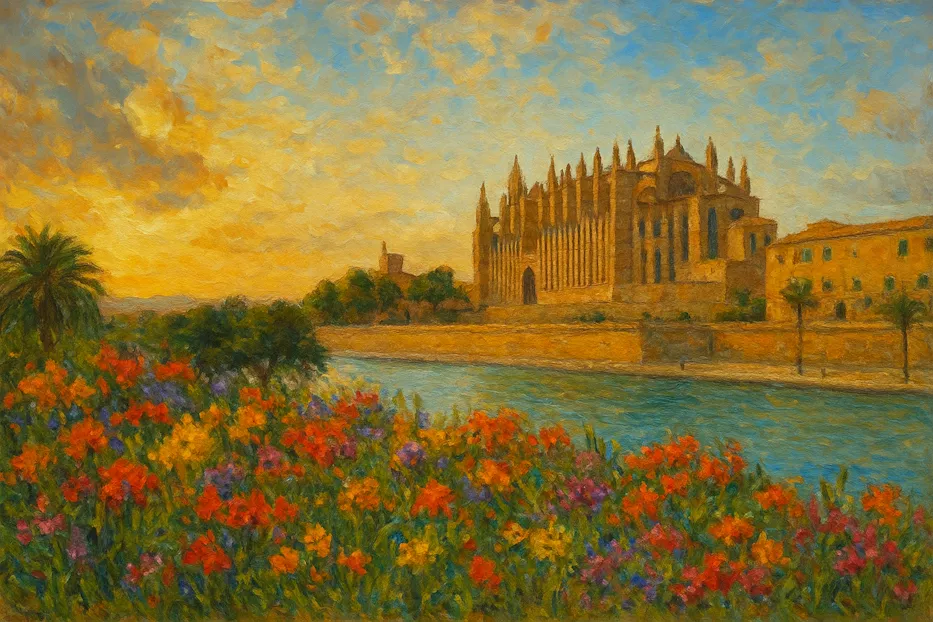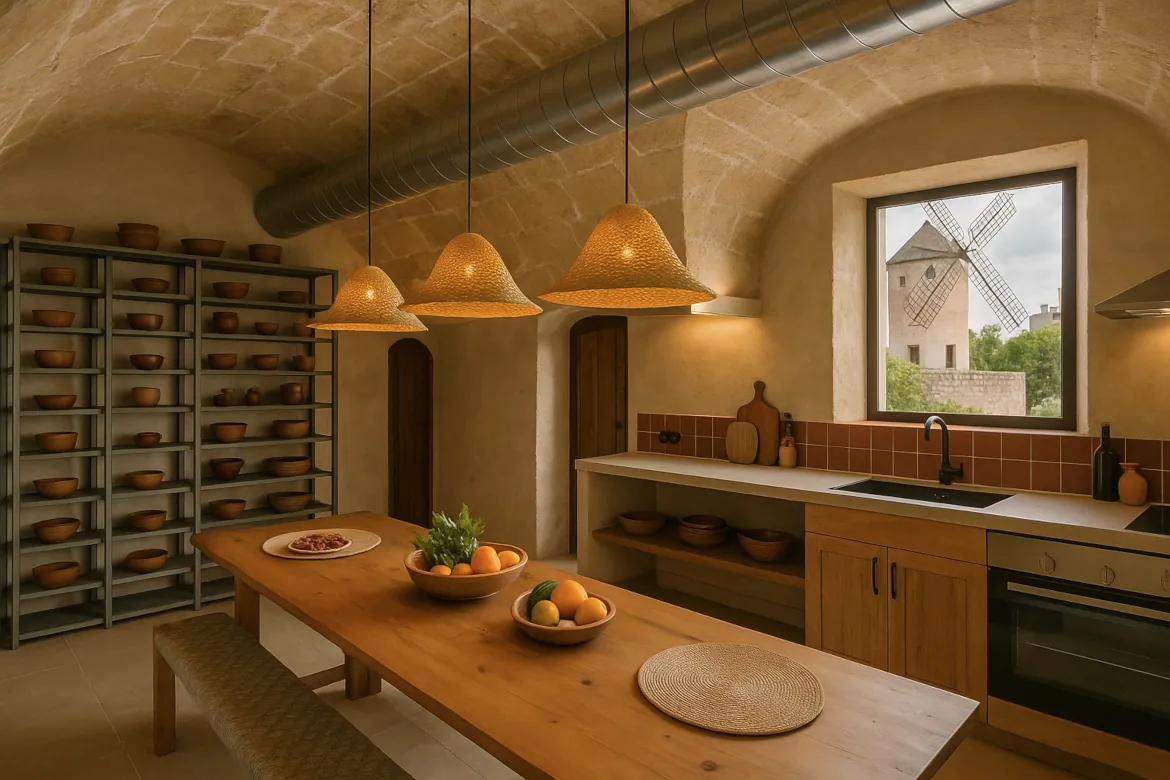So, what is the nicest island in Spain?
When travelers dream of Spanish islands, two main destinations usually come to mind: the Balearic Islands in the Mediterranean and the Canary Islands in the Atlantic. Each archipelago has its own charm, but not everyone is drawn to the volcanic landscapes of the Canaries. For many visitors, the answer to the question “What is the nicest island in Spain?” is clear: Mallorca.
This Balearic jewel offers a rare balance of stunning natural scenery, idyllic beaches, and a rich historical heritage, making it not only the nicest island in Spain but also one of the most beautiful in Europe.
Table of Contents
Mallorca’s Natural Beauty: From Mountains to Turquoise Coves
One of the most striking features of Mallorca is its diversity of landscapes. In the northwestern corner, the Serra de Tramuntana mountain range runs along the coast, offering some of the most dramatic views in the Mediterranean. This UNESCO World Heritage Site is famous for its stone terraces, winding roads, and sheer cliffs plunging into the sea.
For beach lovers, Mallorca is paradise. The island boasts over 200 beaches, each with its own character:
- Playa de Muro: A family-friendly stretch of soft sand and shallow water.
- Cala Deià: A rocky cove surrounded by pine-covered cliffs, perfect for a tranquil swim.
- Caló des Moro: A picture-perfect cove with turquoise waters, often considered one of the most beautiful spots in Spain.
- Es Trenc: Known for its Caribbean-like white sand and crystal-clear water.
Unlike the volcanic black sands of Tenerife or Lanzarote, Mallorca’s coastline offers the quintessential Mediterranean palette: golden beaches, emerald pines, and sapphire seas.
History and Heritage: A Journey Through Time
Mallorca’s appeal isn’t limited to its natural scenery. The island also has a fascinating cultural and historical heritage.
Palma de Mallorca, the capital, is a city that blends old and new. Its Gothic La Seu Cathedral, overlooking the harbor, is one of Europe’s most striking cathedrals, with interior elements redesigned by Antoni Gaudí. Nearby, the Royal Palace of La Almudaina tells the story of Mallorca’s Islamic and Christian past.
Valldemossa, a mountain village of stone houses and cobblestoned streets, became famous after composer Frédéric Chopin spent a winter here with George Sand. Today, its monastery and cultural heritage attract visitors from all over the world.
Sóller, connected to Palma by a historic wooden train, charms travelers with its Art Nouveau architecture, orange groves, and lively square.
Bellver Castle, a rare circular fortress, and the Sanctuary of Lluc, a spiritual site nestled in the mountains, highlight the island’s depth of history.
From Roman remains to Moorish influences and medieval monasteries, Mallorca is a living museum.
Food and Wine: A Taste of Mallorca
No island experience is complete without exploring its gastronomy. Mallorca is home to a distinctive cuisine that reflects its Mediterranean setting.
Ensaimada: A spiral-shaped pastry dusted with sugar, often enjoyed for breakfast.
Sobrassada: A spreadable sausage made from local pork, seasoned with paprika.
Tumbet: A traditional vegetable dish, similar to ratatouille, layered with potatoes, aubergines, and peppers.
Fresh seafood: From grilled octopus to lobster stews, Mallorca’s coastal towns deliver dishes straight from the sea.
The island also has a growing reputation for wine, particularly in regions like Binissalem and Pla i Llevant, where vineyards produce robust reds and crisp whites. Many wineries offer tastings, making wine tourism an increasingly popular activity.
Outdoor Activities: More Than Just Sunbathing
While Mallorca’s beaches are world-class, the island offers far more than lazy days by the sea.
Hiking: Trails through the Serra de Tramuntana lead to breathtaking viewpoints, secluded monasteries, and hidden coves. The route from Deià to Sóller is especially rewarding.
Cycling: With smooth roads, varied terrain, and a mild climate, Mallorca has become a cycling mecca, attracting both amateurs and professional teams.
Sailing and Water Sports: The island’s marinas are perfect for boat rentals, and the calm waters invite kayaking, paddleboarding, and diving.
Golf: For those who prefer a more leisurely activity, Mallorca has over 20 golf courses set in stunning landscapes.
This mix of adventure and relaxation ensures there’s something for every type of traveler.
Villages and Towns Not to Miss
Beyond Palma, Mallorca is dotted with villages that capture the soul of the island:
Deià: A haven for artists, musicians, and writers, with stone houses clinging to the hillsides.
Fornalutx: Often called one of the prettiest villages in Spain, with its terraced gardens and mountain backdrop.
Pollença: Known for its Sunday market and the 365-step Calvari staircase leading to a hilltop chapel.
Alcúdia: A town with a perfectly preserved medieval wall and Roman ruins nearby.
Each town offers a different perspective on Mallorcan life, from rural tradition to coastal charm.
Accessibility: Easy to Reach, Easy to Explore
One of Mallorca’s greatest strengths is its accessibility. Palma Airport is one of Spain’s busiest, with direct flights from most major European cities. This convenience makes Mallorca an easy getaway for weekend trips as well as longer stays.
For those who prefer traveling by sea, regular ferries connect Mallorca with mainland Spain. Services run from Barcelona, Valencia, and Denia, as well as from neighboring islands like Ibiza and Menorca. This makes the island an excellent choice for travelers planning multi-destination itineraries across the Balearics.
Once on the island, Mallorca is also well connected, with modern roads and scenic routes that make exploring by car straightforward. Travelers can circle the island in a day, but most choose to take their time, discovering new landscapes and hidden gems along the way.
Why Mallorca Is the Nicest Island in Spain
Ibiza has its nightlife, Menorca has its tranquility, and the Canary Islands boast unique volcanic landscapes. But Mallorca offers the perfect balance. It combines beaches, mountains, culture, gastronomy, and accessibility in a way few other islands in Spain can match.
It’s this combination that makes Mallorca more than just another holiday destination. It’s a place where visitors can hike in the morning, swim in turquoise waters by midday, wander through historic towns in the afternoon, and dine on fresh seafood under the stars at night.


